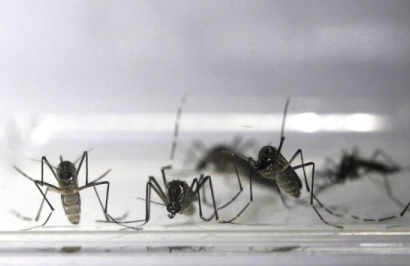
New mathematical model helps predicting dengue epidemics in urban areas
The formulas include variables as local transmissibility and the movement of people around a citys neighborhoods
11/01/2016
The study can be an excellent tool to help controlling the disease, saving time and money from the authorities and people
Mathematical models are many times used to predict the propagation of epidemics. Having this in sight, a recent study offers a simplified approach to track the dengue virus spread in urban areas. The article entitled SIR-Network Model And its Application to Dengue Fever, by Lucas M. Stolerman (IMPA), Daniel Coombs (British Columbia University) and Stefanella Boatto (UFRJ), was recently published by SIAM journal on Applied Mathematics.
After the recent declared war against the Aedes aegypty mosquito, transmissor of dengue and other diseases, the work comes in a perfect time to assist the task.
The model – called SIR-Network – allows to understand how the different neighborhoods conditions affect an epidemics dynamics in an entire city. One of these factors is still water, which allows the development of large mosquito populations. This insect flies, in average, only a few hundred meters from its birthplace, while infected humans displace in long distances and can propagate the disease. The article also presents fundamental properties of the basic reproduction number, called Ro – number of expected secondary cases in the human population after a single viral infection.
The formulas in the study describe whether an epidemic is possible, based on the traffic of people among neighborhoods and each regions transmissibility, which depends on the mosquito populations, for example. Once in possession of these information, it is possible to predict local interventions, as still water removal in certain neighborhoods.
One of the SIR-Network models advantages is that the elements related to the A. aegypti mosquito and its habitat, as the amount of still water, are within the transmission parameter. This way, it is possible to put mathematical simplicity and a citys neighborhoods heterogeneity together, in order to obtain precise results regarding dengues propagation potential, affirms Dr. Lucas M. Stolerman.
The authors applied the model for the recent dengue epidemics in several neighborhoods in Rio de Janeiro, since the diseases outbreak between 2007 and 2008.
Among others, they included a transmission rate during the epidemic period that varied along the weeks, in order to coincide with the available cases. The authors observed the transmission rate had peeks from six to eight weeks before the dengue incidence peek.
Besides this, they realized the citys downtown is the most important neighborhood for a disease to spread, since a large number of people displace towards the region every day to work. The researchers also found out that the results would be more precise if a time-of-infection parameter was introduced to model the seasonal climate shifts.
The study shows the relation between urban flow between the neighborhoods and the diseases propagation. The neighborhoods with greater daily people inflow should receive greater attention. If a neighborhood has a greater transmission rate, the people flow towards this neighborhood should be used as a mechanism for a new epidemic, explains Dr. Stolerman. In some cases, we were able to obtain mathematical formulas for this flows value An efficient way to control the disease is, this way, from special attention to the central parts of a city, he adds.
Although being an important ally controlling the disease, the authors acknowledge a broader picture of a dengue epidemic would be very difficult. This is due to the large number of variables. Among them, environmental factors affecting mosquito populations, climate changes and human behavior avoiding the mosquito. Rio de Janeiro, for example, has a large tourist flow during carnaval. However, the carnavals date, the climate patterns in the prior months and the number of tourists vary every year.
For the researchers, the simple mathematical models advantage is to offer a simplified and clear image of the problem. This way, the study is useful as a tool to help controlling the disease in urban areas, saving time and money from authorities and people.…










